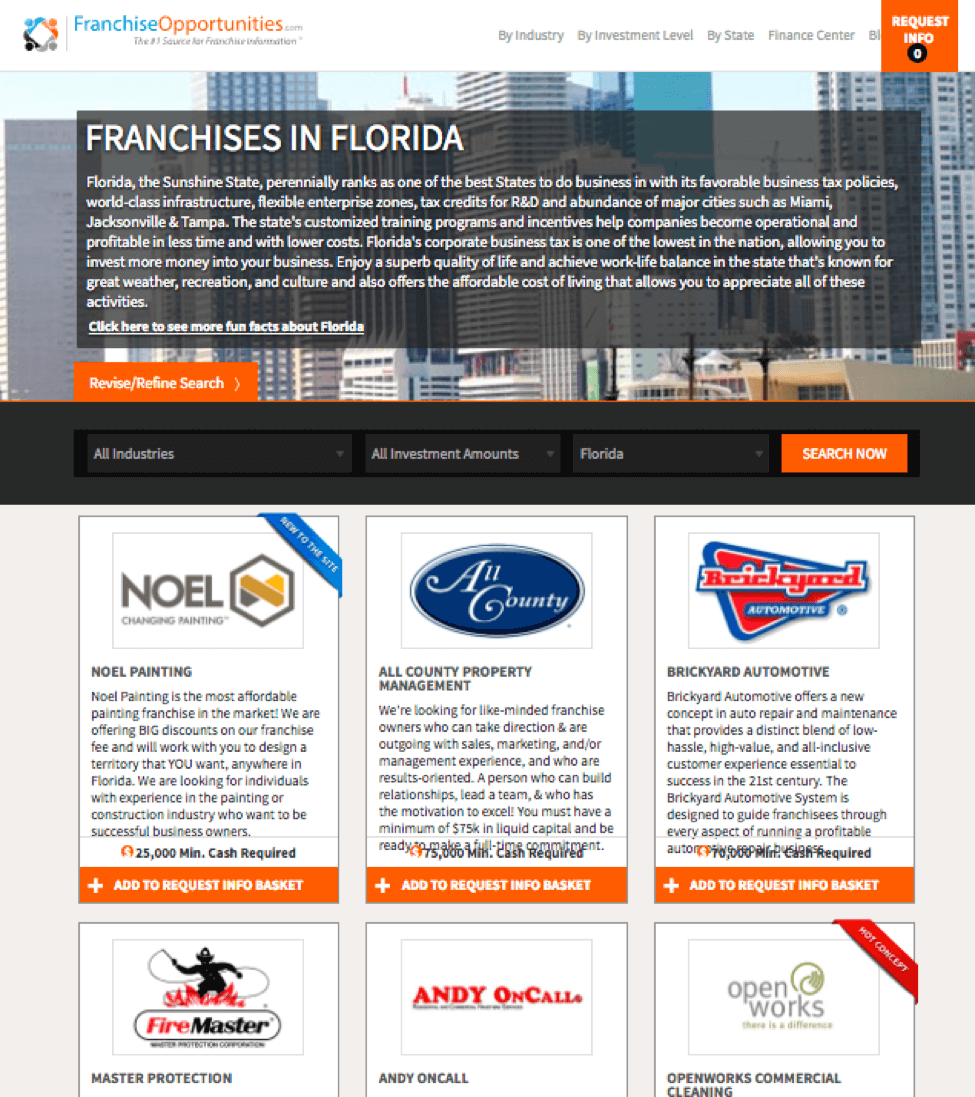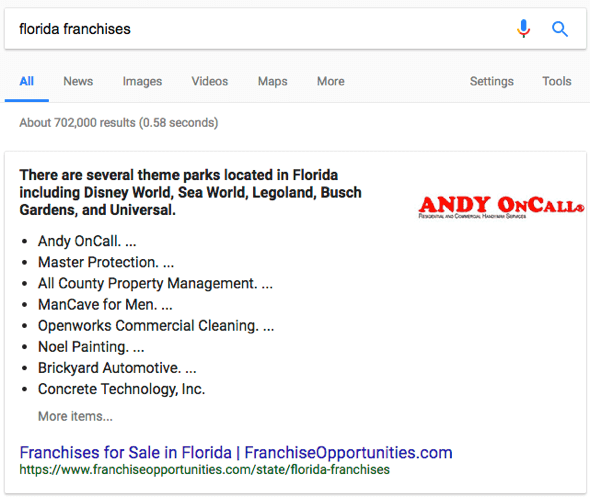3 tactics we’re using for Answer Boxes
The featured snippet (answer box) that sometimes appears at the top of the SERPs is a coveted spot for marketers, but how can you get your content there? Columnist Brian Patterson has some tips.
“Position 0” is the new holy grail in organic search rankings. A normal position 1 ranking is great and all, but I’ll take an answer box that features my content (sometimes with an image) over position 1 in almost all cases.
Just take a look at how attention-grabbing an answer box (also known as a “featured snippet”) is:
With some of our own clients, we’ve seen click-through rates increase by as much as three times when one of their URLs that already ranks on page one suddenly gets an answer box.
Once this started happening organically, it was like a drug — and we wanted more. So we set out to determine how we could get answer boxes for more queries.
The first thing you must do, before anything else, is determine the keywords that are likely to generate answer boxes. At scale, this is impossible to do without a tool that tracks the SERPs and denotes which keywords have answer boxes. We use STAT for this, but many other tools are now tracking this as well.
Once you understand where answer boxes currently show up, as well as manually review to see where they have the potential to, you can move on to prepping your data to optimize it for an answer box.
The following are three strategies we are actively using with our clients that we’ve found to have an impact in generating answer boxes.
1. Structuring data properly
There are a few types of content we see extracted most frequently out of our pages to populate answer boxes. They are:
- Ordered lists (OLs)
- Unordered lists (ULs)
- Paragraphs of text
- Data in tables
- Headings
Ordered and unordered lists, as well as paragraphs, are pretty common in answer boxes, and you probably see them every day. For optimizing lists, you’ll want to use a heading tag above the list and give the list a title that closely matches the keyword you are targeting. That way, Google knows exactly what the list contains.
Here is an example of an answer box generated from a list, where the source of the content has a big H2 title right above the list:
Which is generated from this web page:
Google also really loves to include tabular data when it makes sense for the query. As I see it, tables are really easy for computers to understand — much more so than natural language paragraphs. So, keep an eye out for opportunities to either add tabular content to your site or reformat existing content into tables.
Wikipedia does a really good job of using tables and is often rewarded with answer boxes:
Something we are seeing now, which was a little surprising, is that Google is building their own lists out of headings. Our client, Franchise Opportunities, was kind enough to let us share an example of an answer box that they currently receive. The page that powers the answer box looks like this:
As you can see, there is actually no list on this page. Each box is about a company, and each company’s name is wrapped in an H2. Google extracts the H2s from the page and builds their own list in the answer box:
Using this, we’ve formatted pages similarly for clients, leveraging headings when we can. Google seems to have gotten really good at grabbing these headings and making lists when no formal list exists.
2. Not giving it all away
As the saying goes, people aren’t going to buy the cow when they can get the milk for free. The same goes with your answer boxes; if you give away the full solution in the answer box, you aren’t going to pull that searcher into your site.
Take this answer box, for example:
This gives you what you need straightaway, so if you are just looking to have some cursory knowledge on the topic, now you’ve got it — no click into the site needed.
To get around this, we always try to add some extra (still helpful) steps so that Google doesn’t scrape your content and basically eliminate the need for you. We target eight steps, as Google will generally truncate after seven with a “More items…” link.
Now, contrast the example above with this answer box below, where not all of the steps are displayed and you need to click through before you have the full answer:
This list begs you to click through, which is the ultimate goal.
3. Use Google Search Console to re-crawl pages
I’m not a fan of Google Search Console. I’m skeptical of most of the data is contains, and the constant bugs are disconcerting. That said, there is a feature that I am growing to love, even though I initially doubted it would work: requesting indexing.
I thought that button was just too similar to the old “submit your site to Google” page, which I’m fairly certain moved you to the end of the crawl queue.
But, as it turns out, the “request indexing” button does seem to almost instantly update Google’s index of the page. And, using it, we’ve seen answer boxes appear within the same day of updating content and requesting a re-index.
So after you’ve updated your content to be well-positioned for an answer box, log in to Google Search Console. Expand the “Crawl” menu and click “Fetch as Google.”
Plug in the page you edited and click “Fetch.”
It will then be added to the table. Click “Request Indexing” next to the page in the table.
I know you might be skeptical, and I do feel a little sales-y just typing those steps out, but it has honestly worked for us on more than a few occasions. Whether it works or is a placebo, we do it every time now and have seen some near-immediate changes in the SERPs that we never used to see before.
Final thoughts
Answer boxes are a new frontier in SEO. Everyone is trying to grab this relatively newly-created real estate because of its high value. However, Google is tinkering a lot with answer boxes, so expect a lot of volatility as you try your hand at your own land grab. But if you can make it work, answer boxes can be a great way to get new, relevant traffic.
Opinions expressed in this article are those of the guest author and not necessarily Search Engine Land. Staff authors are listed here.
Related stories











